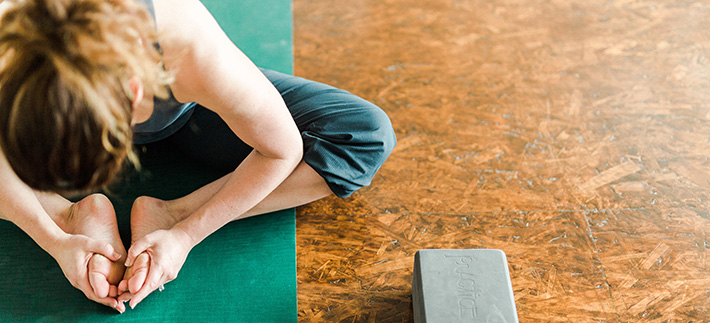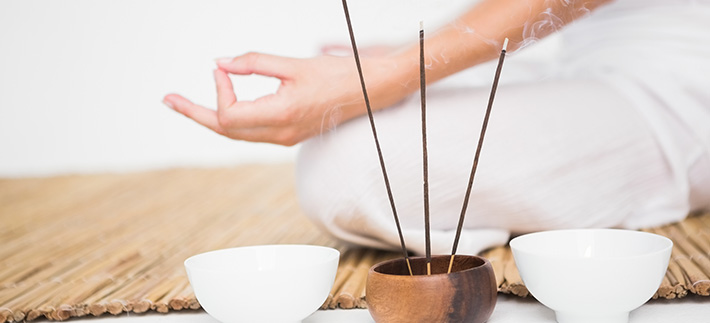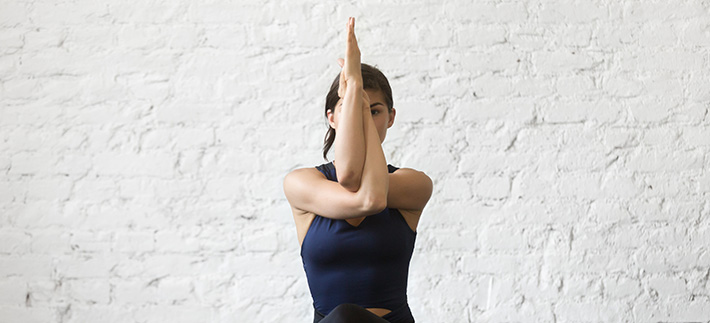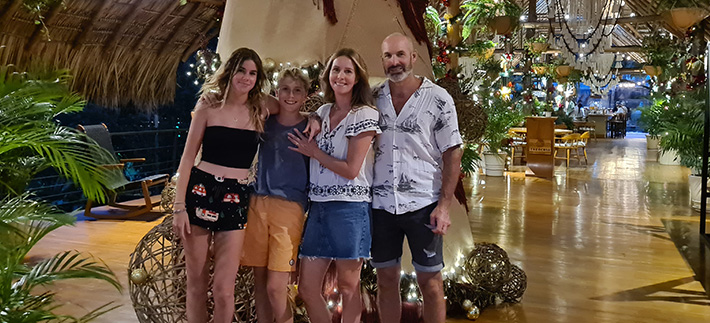
April Community Partner: Canary
March 27, 2019
Meditation for Golfers
May 20, 2019
APRIL 25, 2019
Featured Class – Yin is In
Well, now it is. At first, I was like nope, thanks, not for me. I came from an ashtanga background and the longest we were in a pose was 5 breaths. It was strong and dynamic and allowed me to move away from anything too uncomfortable in short order.
Yin asked me to stay. Like for a looooong time. It’s relative I know, but a couple of minutes verses a couple of breaths felt like a significant difference.
In the beginning I was agitated. The poses themselves were good. I felt something letting go or awakening, or stretching, but my mind was restless and distracted. It was a practice as much for the thoughts and emotions I was experiencing as it was for my body. I know you might be thinking, well that’s yoga. The whole body, the whole mind, the whole heart, the whole spirit participate. And you would be right. It’s true. It just took me a bit to get there. In my Yin practice I could not move away from it. I blamed it on the pose. I didn’t see how restless my mind was and I would physically fidget and move and muss about. This just created more frustration and discomfort.
I kept showing up for two reasons. One, is that I knew it was good for me. Like the kind of good you can feel into your bones. I knew all of me, every part, needed this yin medicine. Second I loved my teacher, Candace. She would lead a Yin/Yang class on a Monday evening. She would say the exact words I needed to hear and ask me to melt into a pose that my hips were crying out ‘yes’ for, even as my mind was saying ‘come on let’s get up and move’. I understood from Candace that yin was a practice that would increase my flexibility, my range of motion and open me up in a way that my yang practice didn’t. But really at this point they were just words. Yin and Yang.
So what is Yin Yoga really and what’s the difference between a yin practice and a yang and why would you want to take it?
In Yang Yoga we target the muscles. Yang is a practice that builds heat in the system and focuses on exercising our muscles. Our yang tissues (muscles, blood) are fluid-filled, soft and elastic. In yang we alternate between contracting and relaxing the muscles. Yang develops muscle tone, balance and stamina. All really good things.
In Yin Yoga we target the connective tissue. Our connective tissue is much drier, harder, and stiffer. The connective tissue we are targeting in our yin practice is comprised of the fascia, ligaments, bones, and joints of the body. Yin Yoga poses apply moderate static stress to the connective tissue to promote healing, rejuvenation, and flexibility. In Yin we slooooow it right down and find ourselves in more passive poses. We still feel. There is definitely sensation that comes with this! We use props to support ourselves so that we can literally hang out and marinate for a couple or more minutes. Our connective tissue needs support and space to release. Muscular passivity allows for the greatest softening and range of motion. Being soft is also the least compressive to the joint tissues. Gentle, persistent, supported pressure is key to this practice. As we move our bodies slowly, and mindfully through tolerable ranges of motion, this is how we regain or increase our range of motion, strengthen the bones, and rehydrate and lubricate the tissues.
Yin Yoga is an opportunity to move into a state of resting and digesting. When we enter the poses and sink into a space for a period of time we create allowance. We slow down. We become aware of our bodies. We melt into ourselves and melt away from the busyness of doing. We heal our bodies.
How incredible is this? So good right?! The struggle for me and maybe for you too can be the mind. Wow does it ever have a lot to say. Like a lot. About everything. And it can attempt to distract you from being. Like from just being. And that is the greatest place to be. Here. No better place to land really and yet the mind will often have us jumping to the past and the future incessantly. So a big part of the practice is releasing our grip. We will always have thoughts. Studies have shown that we have 80,000 to 100,000 thoughts a day. The shift is letting go of our attachment to them all. We might follow them or believe them when really they are just floating through and don’t need our full attention. We can direct our awareness and attention to our body, to our breath. We can notice where to soften or explore a sensation without the narrative. Knowing and trusting that just as your tissues will start to uncover and discover some ease, so will your attachment to your thoughts. I now know in hindsight and from years of yoga that my resistance to yin (and who is kidding who to most things in my world) was my mind. This is where I needed the biggest softening. I had spent so much of my life holding on and holding in. How could I expect different from the tissues in my body? They were just mirroring me. So in my own time and my own way I started to let go and wade in.
I am grateful that I kept showing up. The gifts are endless. It took some determination and discipline. I look at my son and everything new that he learns and see that he has to really practice his words or his movement to find the skills. Over time he melts into some sweet ease.
This is yin for me now. There is ease to it. Don’t get me wrong! I feel my body. I feel sensation. It can be uncomfortable and yet I can safely stay with it and see what unravels or releases. So yes yin is in. Way in.
The effects of mindfulness and relaxation of course have been researched and measurable benefits have been discovered. Science is behind our own individual and collective healing. When we are able to consciously release, arrive into the moment, and into the breath, then our heart rate and our brain wave patterns become slower, as well as our blood pressure becoming lower.
Yet when I was asked to be somewhere and see where I could soften the real inner practice began. Soften? I think at the time I only knew how to hold on tight and hope. And not only soften but use the props that were available to help with this release



